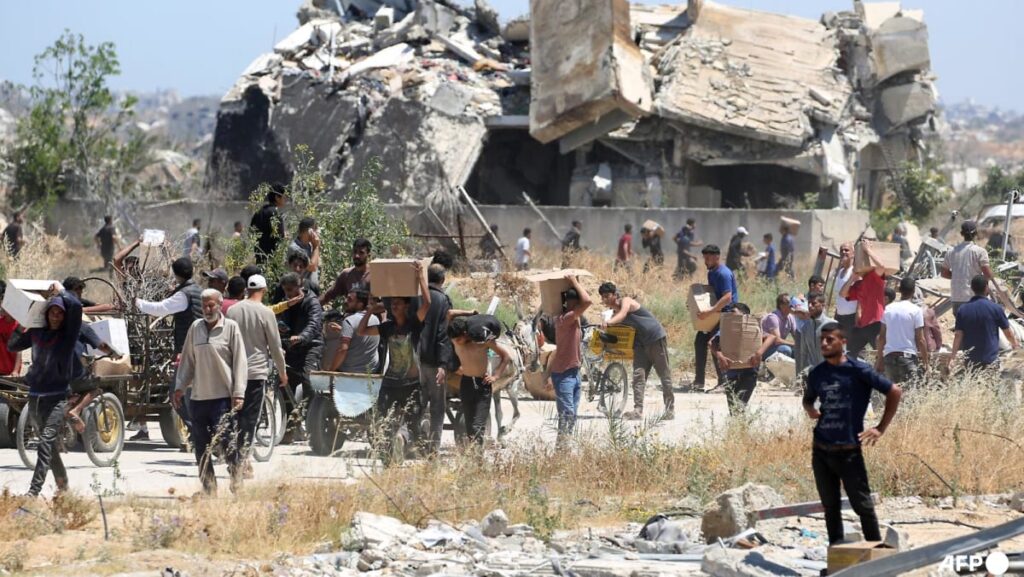Aid will be delivered with the help of private subcontractors transporting supplies in armoured vehicles from the Gaza border to the hubs, where they will also provide security. The GHF said the aim is to deter criminal gangs or militants from redirecting aid.
The GHF said each of its initial four hubs would serve meals for roughly 300,000 people. It also said it will eventually be able to meet the needs of 2 million people.
One of the hubs is in central Gaza, close to the Netzarim Corridor, a strip of land held by Israeli troops, according to a map issued by the Israeli military. The three others are in the area of Rafah, south of the Morag Corridor, another military-held strip.
Almost the entire population is currently in northern Gaza – where no hub is currently located – or in central Gaza. They would have to cross through Israeli military lines to reach the hubs near Rafah.
The GHF said it will create more hubs within 30 days – including in the north – but did not specify their exact locations.
The UN has rejected the new mechanism, saying it allows Israel to use food as a weapon, violates humanitarian principles and will not be effective.
Why do aid groups and the UN oppose it?
The UN and major aid groups have refused to cooperate with the GHF over concerns that its plan would “weaponise aid” for Israel’s military and political purposes.
They said Israel would have the power to determine who receives aid and to force the population to move to where it is being distributed, emptying large parts of the territory. That would potentially violate international laws against forced displacement.
“We cannot take part in a system that violates humanitarian principles and risks implicating us in serious breaches of international law,” said Shaina Low, communication adviser for the Norwegian Refugee Council, a leading aid group operating in Gaza.
Israeli Prime Minister Benjamin Netanyahu had said that under the aid mechanism, Gaza’s population would eventually be moved to a “sterile zone” in Gaza’s far south. He said it was for their protection while Israeli forces fight Hamas elsewhere. He also said once the Palestinians enter the area, “they don’t necessarily go back”.
Israel has also said that after Hamas is defeated, it will implement a plan proposed by Trump to relocate the territory’s population outside Gaza, though it portrays migration as “voluntary”. The Palestinians, along with nearly all of the international community, have rejected the idea.
The GHF said in a statement that it is independent and apolitical and will not be part of any mass displacement, adding that its system is fully consistent with humanitarian principles including impartiality and independence.
It also said food will be given according to need, without eligibility requirements, despite Israel previously telling aid groups that the country intends to vet aid recipients and use facial recognition technology.
However, aid groups say recipients will have to pass close to or through Israeli military positions to reach the hubs, exposing them to vetting.
The aid groups also noted that the GHF has said each meal it distributes would have 1,750 calories, which is below the 2,100-calorie per day standard for meals in emergency situations used by the UN’s World Health Organization, UNICEF and World Food Program.
They added that the GHF’s plans for distributing non-food aid remain uncertain.
Thus, the change is simply not necessary, said the aid workers.

